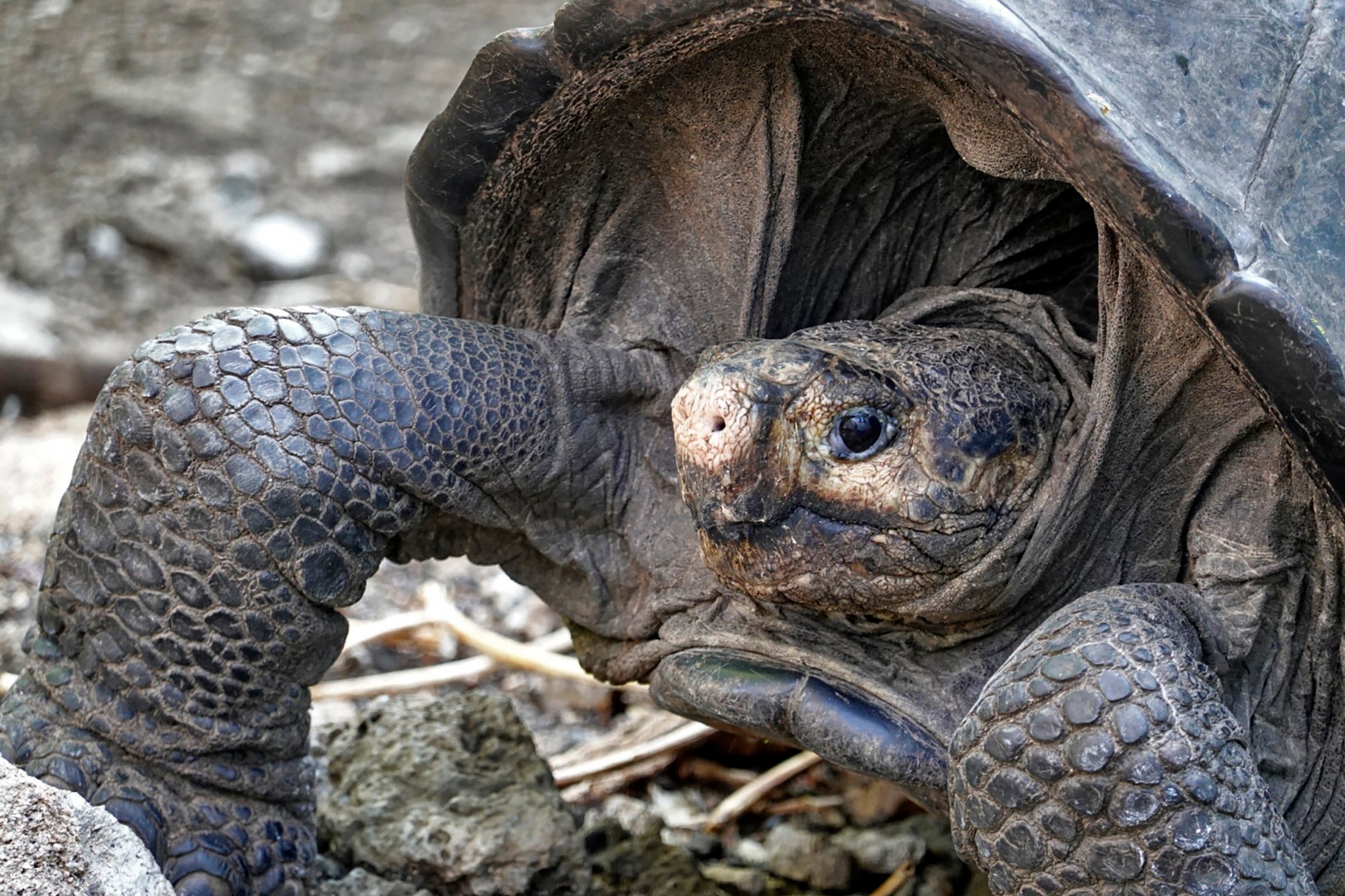Giant tortoise thought to be extinct found in Galapagos
‘Hope is alive’ as the search for more Chelonoidis phantasticus tortoises begins

Your support helps us to tell the story
From reproductive rights to climate change to Big Tech, The Independent is on the ground when the story is developing. Whether it's investigating the financials of Elon Musk's pro-Trump PAC or producing our latest documentary, 'The A Word', which shines a light on the American women fighting for reproductive rights, we know how important it is to parse out the facts from the messaging.
At such a critical moment in US history, we need reporters on the ground. Your donation allows us to keep sending journalists to speak to both sides of the story.
The Independent is trusted by Americans across the entire political spectrum. And unlike many other quality news outlets, we choose not to lock Americans out of our reporting and analysis with paywalls. We believe quality journalism should be available to everyone, paid for by those who can afford it.
Your support makes all the difference.A giant tortoise found in the Galapagos in has been confirmed to be a Chelonoidis phantasticus, or Fernandina giant tortoise — a native species that was thought to have gone extinct more than a century ago.
A team of scientists and geneticists, led by Dr Gisella Caccone of Yale University, compared the DNA of the female tortoise discovered during an expedition in 2019, with samples taken from the only other known Chelonoidis phantasticus, which were taken in 1906 by a team of researchers from the California Academy of Sciences.
The confirmation that the species is not extinct is being celebrated by conservationists and scientists around the globe.
The Ecuadorian Environment Minister, Gustavo Manrique tweeted: “It was believed extinct more than 100 years ago! We have reconfirmed its existence … Hope is alive”
Dr James Gibbs, vice president of Science and Conservation for the Galapagos Conservancy said, in a statement: “One of the greatest mysteries of the Galapagos has been the giant tortoise of Fernandina Island. The rediscovery of this lost species may have happened just in time to save it. Now we urgently need to complete the search to find other tortoises.”
The Galapagos National Park is preparing to undertake an expedition to do just that. Although there have been no further confirmed sightings of the tortoise, scientists have discovered prints and droppings on Fernandina Island believed to belong to the species, and are hopeful that there are more living in the wild.
This is good news for the elderly Fernandina tortoise, who is believed to be more than 100 years old, and is now at a breeding centre on Santa Cruz Island in California. She may not share the same fate as ‘Lonesome George’ a male Pinta Island tortoise who died in the Galapagos in 2012 — he was the last known tortoise of his species, and left no known offspring.
The director of the Galapagos National Park, Danny Rueda, said: “This discovery undoubtedly renews our hope for the recovery of this species.’”
Currently there are about 60,000 giant tortoises living on the Galapagos islands, where Charles Darwin developed his theory of evolution in the 19th century.
Join our commenting forum
Join thought-provoking conversations, follow other Independent readers and see their replies
Comments